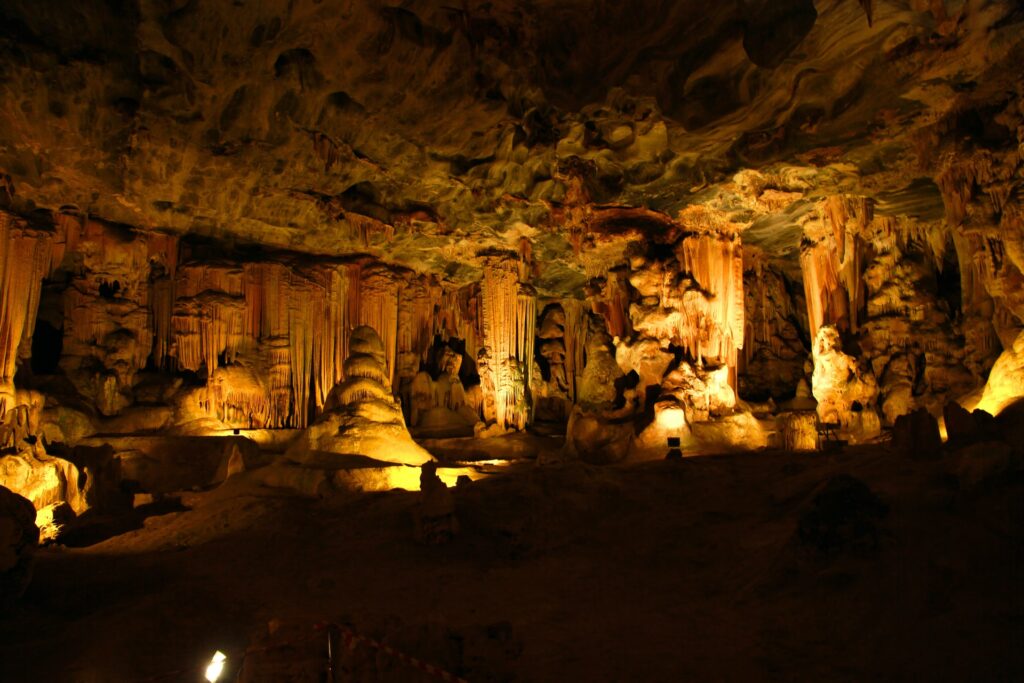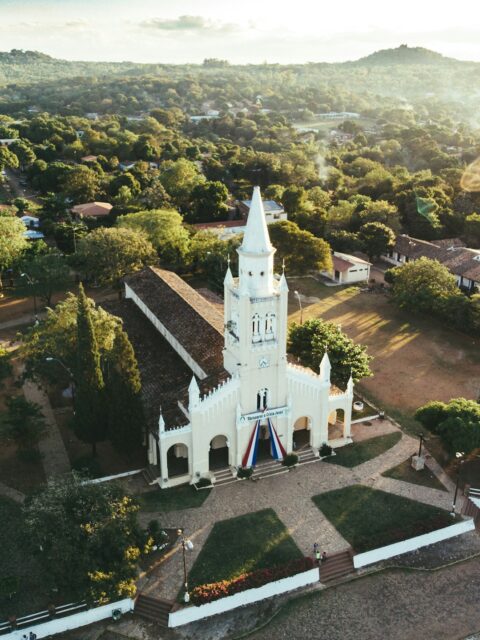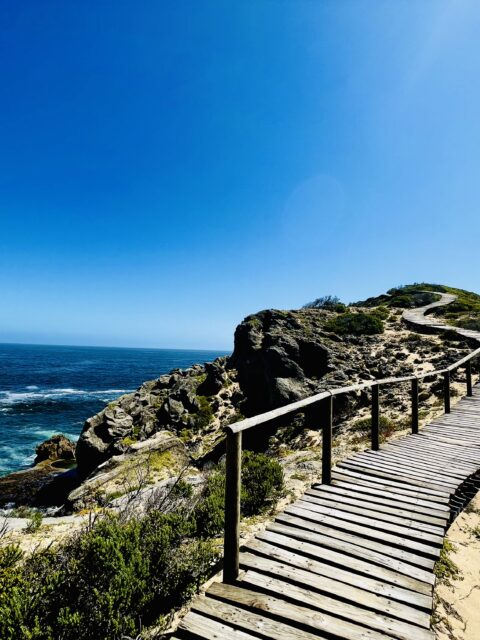Have you ever wanted to explore the earth’s deepest underground adventure? Join us as we take a tour of this breathtaking cave system and look at some cool facts about it.
Cango Caves – A scenic Journey into the Earth
The Cango Caves are one of the world’s largest show caves, covering an area of over 5 km2 (1.94 sq mi). It is located in South Africa, between Plettenberg Bay and Oudtshoorn along the R328 road near Villiersdorp. The Cango Caves offer tours that last from 45 minutes to 2 hours, where visitors can do everything from taking a walk through a dry passage with only their flashlight to going on a challenging caving expedition through dark passages and slippery slopes. The cave system was formed over about 60 million years ago.
The caves are home to large stalagmites (some of which grow up to 50 meters), the tallest being called The Monument, along with dazzling calcite crystals known as “cave pearls”. There is also a wide array of interesting animal life that has adapted well to this dark environment; including blind spiders and tiny insects who spend their entire lives underground. Visitors can take guided tours through some parts of the Caves where they will learn more about its history and how it came to look like what we see today. They will also get an opportunity for adventure by exploring passages not open on other tours or by caving themselves!
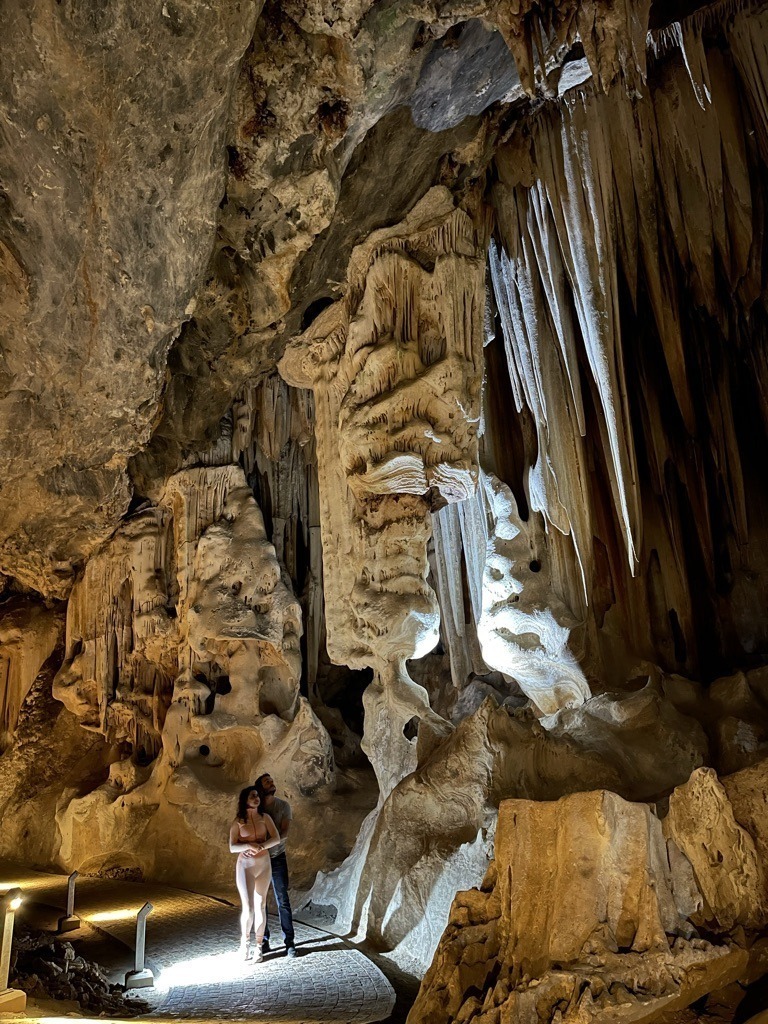
A short history of the Cango Caves
The caves have been known to man since the Early Stone Age, with each year bringing new research and exploration. In those early days, humans explored the caves using self-made candles, most frequently lighting the ceiling. The Cango Caves include signs of ancient San settlement, with cave entrances that were formerly rich in ancient bushman art.
At the beginning of the 18th century, a farmer found this amazing cave system. He decided to use it as a storage area for his produce and named it Grotte Fabrique (meaning “Fable Cave”).
In 1776, while marking out his boundaries along the Kareedouw River, an army officer discovered another entrance into the caves. He reported his find to the land surveyor of the time, Mr. Louis Michel Thibault and it was suggested that this would be a suitable place for people to visit as they can explore underground while staying dry during inclement weather.
The Cango Caves have been a popular tourist attraction for over two centuries, but many visitors have damaged the dripstone columns in the process. In 1820, Lord Charles Somerset, the Governor of the Cape at the time, published the first Caves Regulation to safeguard the caves’ environmental asset and prohibit tourists from collecting mementos.
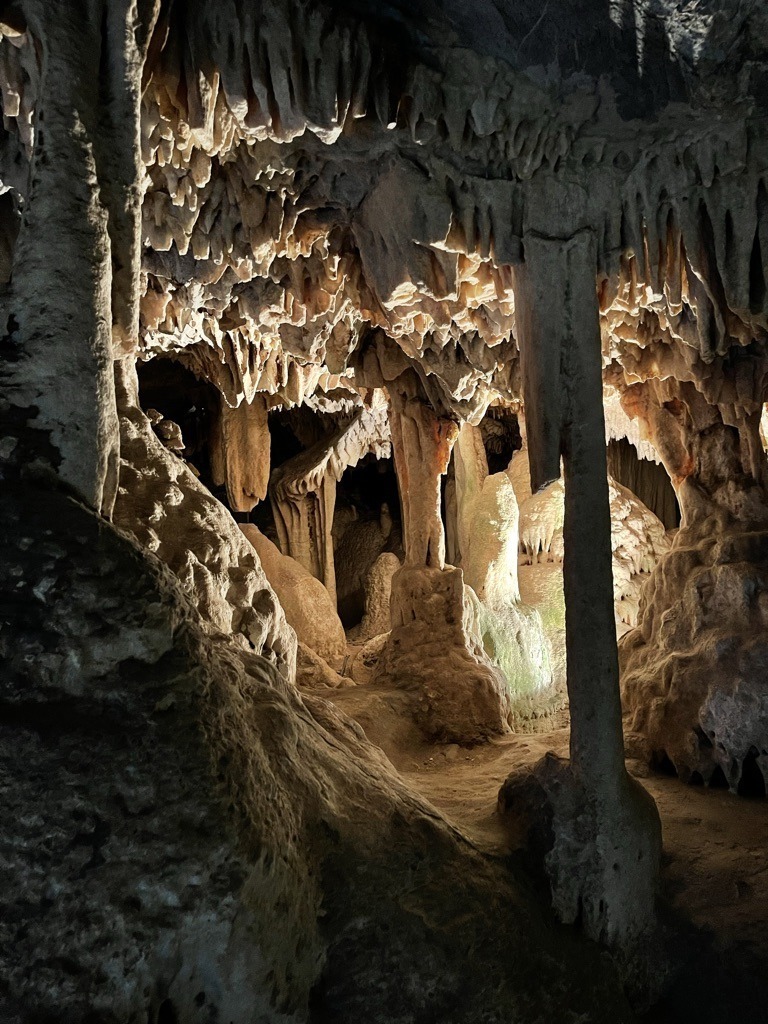
Cango Caves Structure
The Cango Caves are on a limestone plateau that is 1.5 kilometers broad and 16 kilometers long. The limestones were shaped by chemical processes approximately 750 million years ago. The caves were carved out after being filled with water for an extended period of time, followed by the flowing rivers cutting into the rock. It then became a fossil cave, when the bat caves dried up and the speleothems began to grow. Stalactites (hanging columns), stalagmites (growing upward), and helictites (columns that grow in all directions) glimmer from every nook of the caverns and make breathtaking pieces of art.
The Cango Caves are split into Cango One, Cango Two, and Cango Three, with many deeper areas still being investigated. The cave’s first full-time guide, Johnnie van Wassenaar, who worked here for 43 years from 1891, made the most significant findings in the caves. He was essential in bringing thousands of visitors to Cango One, which is still the most visited section of the caves.
How to reach the Cango Caves
The Cango Caves can be reached by taking the N12 west from Cape Town, or east from Oudtshoorn. The caves are about 20 minutes drive north of Oudtshoorn and 50 minutes south of Plettenberg Bay on R329 (also known as De Rust Road).
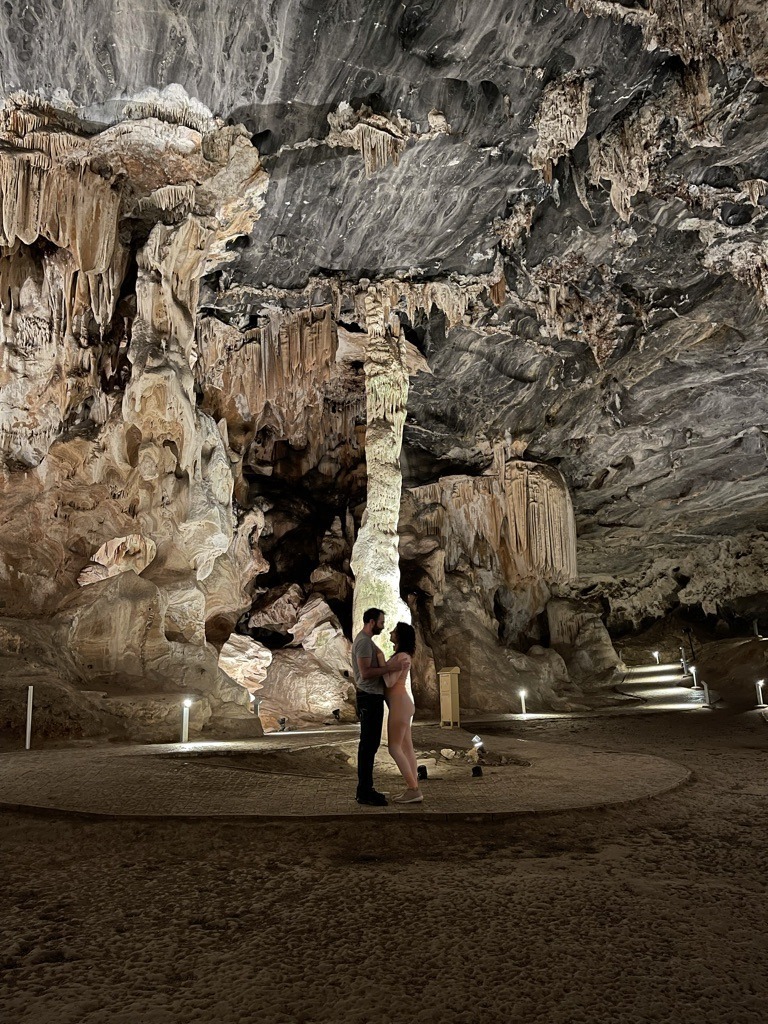
Visiting options at Cango Caves
There are two ways you can visit the Cango Caves, whether you are visiting the beautiful Garden Route for a holiday or simply want to explore them on your own. You can choose between two different tours that last anywhere from 45 minutes to several hours; including an option where you can go caving yourself!
Note: Reservations are required for any of the tours, we managed to make our reservation directly through Cango Caves’ Facebook Page.
The Heritage tour
One of the most popular tours that can be taken on a trip to Cango caves is called The Heritage Tour. It allows visitors to explore some parts of the cave system where they can learn about its history and see some impressive rock formations.
Heritage tours start daily at 9:00 AM and depart every hour until 4:00 PM. The prices for this tour are:
- Adults: R$150 (approximately 9.5 USD)
- Children: R$100 (approximately 6.5 USD)
The Adventure tour
The second and more exciting tour offers those who are more adventurous an opportunity to go caving themselves. This can be done on an overnight caving expedition or during a day tour where you can go through some of the more challenging areas.
Note: Currently the Adventure Tours are suspended until further notice due to the pandemic situation.
When functioning, adventure tours start daily at 9:30 AM and depart every 1.5 hours until 3:30 PM. For this tour, there are some weight and height requirements, as some of the spaces are very tight. Admission fees are as follows:
- Adults: R$220 (approximately 14 USD)
- Children: R$150 (approximately 9.5 USD)
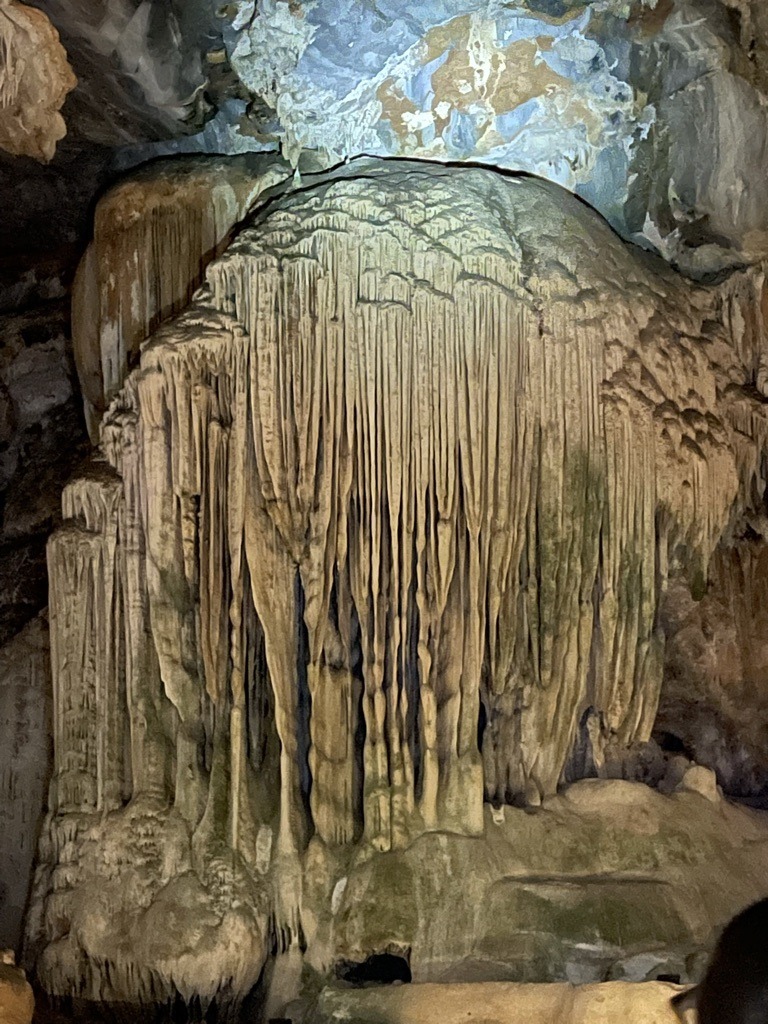
Things to take into account when visiting the Cango Caves
When planning your visit it is important that you consider:
- The tour times and dates
- Booking your tour in advance
- Wearing comfortable shoes
- Inside the caves there is a constant temperature of 20 Degrees Celsius throughout the year, so make sure you dress accordingly
- Make sure you stay in the designated areas and that you don’t touch the stalactites and stalagmites
We would love to hear about your experience visiting Cango Caves. Have you been before? What was the most memorable part of your visit for you and what surprised you the most? Let us know in the comments below!
* Affiliate Disclaimer: Some of the links in our articles are affiliate links. This means that if you click on the link and make a purchase, we may earn a commission at no additional cost to you. We only recommend products and services that we believe in and that we think will be useful for our readers.

